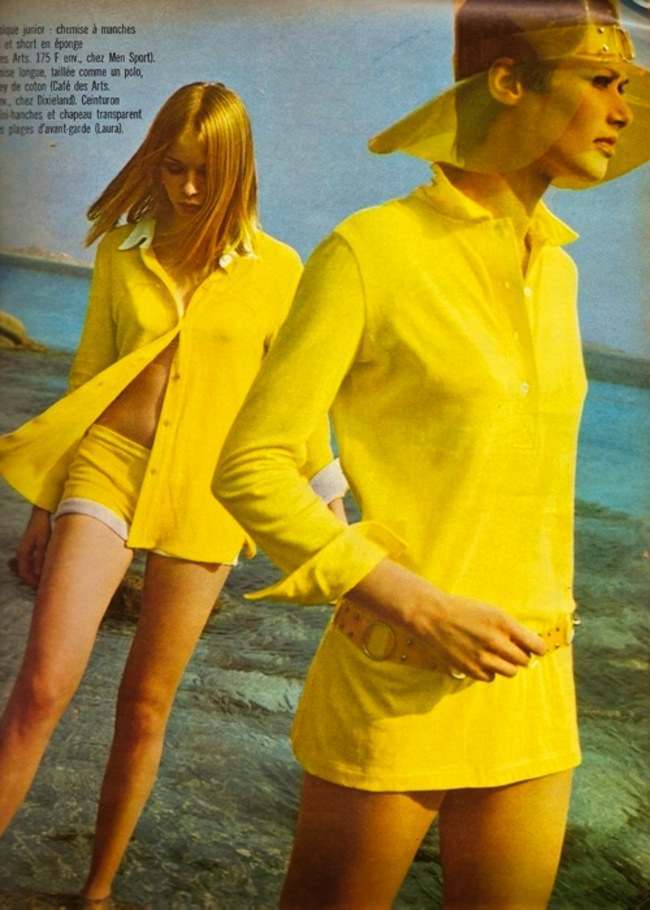

Most notable of these was Mary Quant, who had opened her boutique, Bazaar, in 1955. Whereas it had been Paris and the large couturiers who had dictated clothes fashion in the 1950s, in the early 60s London sprang to prominence with the emergence of a small group of designers and their boutiques. In addition to existing fabrics, many unusual materials entered the clothes designer’s vocabulary, including PVC, and on a limited scale, metal. Many of the fabrics previously restricted to evening wear, such as velvets and satins, were used extensively for all types of clothing. The 1960s saw the abandonment of these traditional rules, and it became perfectly reasonable to wear the same outfit to work as for an evening out.

Similarly, the types of fabrics used were often applied only to specific types of clothing. ‘Casuals’ for wearing during the daytime, were very distinct from formal evening wear. Traditionally, strict rules had dictated what was worn and when. Gaudy accessories, such as Perspex rings and earrings and gold chain-belts, helped to get the message across. Mini skirts, lurid colours and see-through dresses were all geared to showing off women’s bodies. Visiting the worlds fashion capital, she created so much attention that her husband announced, “I am the man who accompanied Jacqueline Kennedy to Paris.”Ībove all, fashion in the 1960s tended to encourage exhibitionism. From the time she became the US President’s wife she made her mark on 20th-century style. With her stick-like arms and legs, the skinny minnie with the baby-like head and saucer-sized eyes was the extreme reflection of youth fashion revolution.Ī society belle with faraway eyes, Jacqueline Kennedy exuded grace.

Featuring hemlines ranging from four to seven inches above the knee, the skirts were often worn with decorative tights or pantyhose.Ī working-class teenager aptly nicknamed Twiggy took the world by storm. It has been said that women’s hemlines during the 1960s served as a barometer of contemporary attitudes: When the Swinging Sixties were at their height, women’s hemlines were likewise when people began to develop some conscience about their lifestyles, the Midi and Maxi skirts made their appearance.įollowing the lead of English designer Mary Quant, fashionable young women across the Western World were going mad for the mini skirt. By the middle of the decade, the thigh-length mini skirt had arrived and a new record in shortness had been achieved. Hems were as high as most people thought they could be. The sixties began with skirts about as short as the shortest lengths of the twenties. In both cases, the new shortness in skirts applied to the middle and later years of the decade. The sixties ‘Dolly Girl’ in her mini skirt and go-go boots, like the 1920s Flapper in her knee-length dress, did not represent fashion throughout the decade. They both experienced expansion, major social changes, daring young fashions and new styles in popular music, art and dancing.Īlthough styles had become younger looking during the late fifties, the clothes illustrated in the fashion magazines at the beginning of the 1960s still looked mature and conventional compared to the designs of a few years later.įashions with a recognisable sixties look took a few years to establish themselves. “The Swinging Sixties” and “The Roaring Twenties” were the only decades to be given names that instantly conveyed the lighter side of life.
1960S SPACE AGE FASHION MOD
Op Art, Pop Art, Miniskirts and Mod Bobs, Boots, paisley and eye-liner four inches thick.


 0 kommentar(er)
0 kommentar(er)
